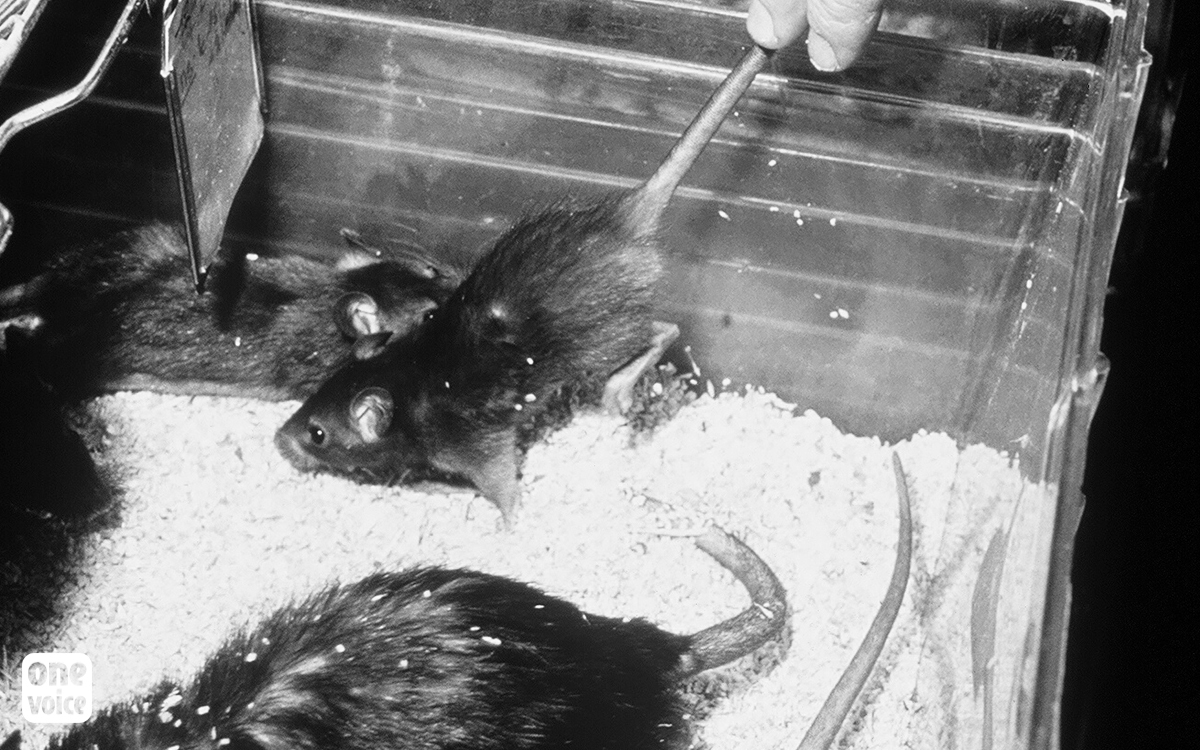
‘Music-loving’ rats: what the media is forgetting
Rats move their heads in rhythm with music. But why do we not talk about the way in which the Japanese team obtained these results and the suffering endured by rats for this purpose?
In mid-November, several newspapers reported on a Japanese experiment showing that rats synchronise their head movements with a musical beat. But all of them have forgotten to talk about the suffering endured by the rats for this experiment: the devices screwed to their skulls, depriving them of water, brain surgery, and death.
Edit from 1 December 2022 at 6pm
Following our letter, Radio Classic’s Web Editing Manager has thanked us for our report and has added our perspective at the end of the article. We thank them profoundly for taking the suffering of these rats into account.
From the ‘quirky’ column of Radio Classique to the affirmation that “this experiment [can] seem cute and unimportant” on a private blog, passing by an inserted image of a rat playing the saxophone in Futura-Sciences and la Dépêche and by the idea that “in addition to having a sense of rhythm, rats also have taste” in the Huffington Post, you would have thought that the rats had fun listening to Mozart or Queen.
A gulf between press communications and reality
But, as quickly pointed out on Twitter by Sébastien Moro (Cervelle d’Oiseau), a populariser in ethology, reading the original study you are very quickly disillusioned.
Firstly, no article mentions that it involved 23 rats aged from nine to ten weeks, or that the declaration from the Japanese team had forgotten to specify the sex of these animals — an important specification, if only to avoid the methodological biases and problems with reproductive experiments.
No mention of suffering
The articles that talk about the accelerometer attached to the heads of ten rats do not explain the fact that the box made to keep the apparatus in place has been screwed to the skull of the rats after drilling holes in it, then reinforced with cement.
Furthermore, no article explains that the rats have been deprived of water in order to motivate them to stand on two legs to reach a bottle kept up high, so as to better observe their head movements. This “motivation” has been developed over several days during repeated sessions of thirty minutes, until they learn to stand up immediately upon entering the assessment box.
Too many experiments
Worse: even in the article from TrustMyScience, which talks a little more than the others about other hypotheses and the methodology of the study, we have not found any mention of the electrophysiological experiment that followed, during which thirteen remaining rats were subjected to brain surgery under anaesthetic to implant electrodes through the skull and damage one of their two eardrums, with the aim of analysing the activity of the auditory cortex.
And no one wants to remind you that all of the rats have been killed following the experiments.
An unacceptable situation nowadays
Clearly, having avoided all potentially controversial aspects of media coverage, the ethical discussion did not appear anywhere in the media. However, animal ethics specialists do exist (thinking in particular about the signatories of the recent Montreal Declaration).
In any event, it does not seem acceptable nowadays to qualify studies as “quirky” or “cute” when they involve making animals suffer and killing them to serve our own interests.
One Voice has written to the editorial staff of the media involved as well as the Agence France Presse (AFP: a French international news agency) to bring this situation to their attention and we are awaiting a response.
Translated from the French by Joely Justice